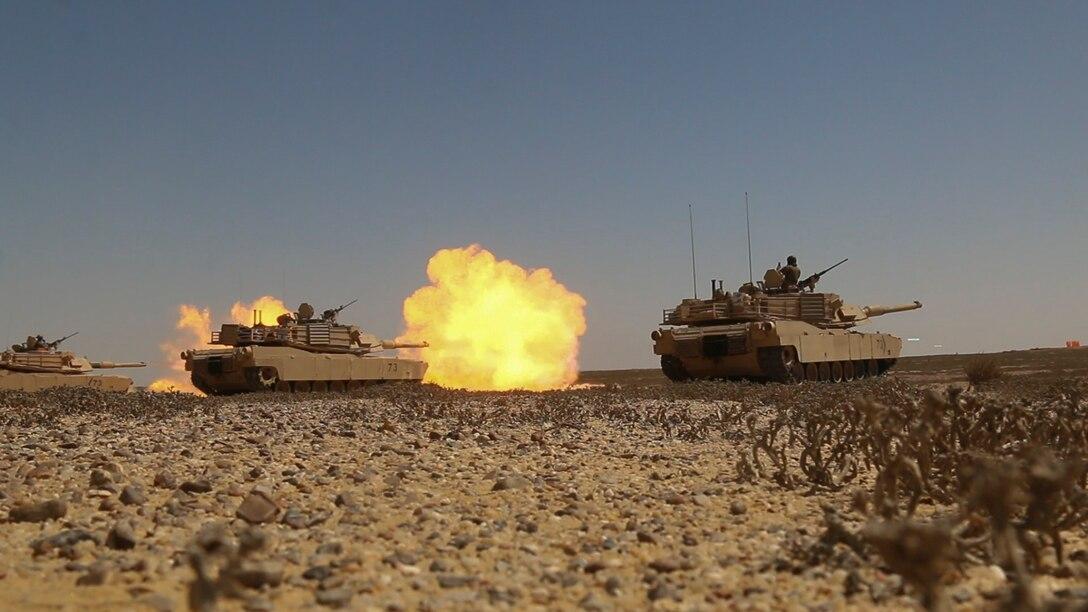What’s better than 75 Abrams tanks?
Posted By Lesley Seebeck on January 18, 2022 @ 15:00

During a pandemic, some in Australia may argue that any excess defence funding should be allocated to rapid antigen tests and a creaking hospital system. But there’s good reason to ensure funding is held to strategically important interests over the longer term, and not nibbled away by immediate concerns, even worthy ones. That’s why defence spending is fenced off from other budget concerns, managed within an envelope and jealously guarded, if always contested.
We expect governments—especially in a modern, wealthy nation—to manage both short-term concerns and the long-term defence capability needed to meet the challenge of a darkening, more competitive international environment. And so it’s worth asking whether indeed, with apologies to Jane Austen [1], a government in possession of a sudden windfall in defence funding is really in want of 75 Abrams tanks.
First, to the source of the apparent windfall eliciting 75 tanks plus associated vehicles [2] ($3.5 billion) and self-propelled howitzers [3] ($1 billion). That windfall was part of the funding originally allocated to the cancelled Attack-class submarines. More may be forthcoming before the costs of the nuclear-powered submarine program kick in—government reporting offers little insight into the mechanics of internal budgeting. But it’s likely that the overall defence capability development program is being shuffled to manage adjustments to the submarine program and allow for ever-present slippage, compounded by effects of Covid 19 and supply-chain shortages.
Sustained, assured funding lines are needed for the long timescale inherent in capability development. Designing and building a submarine—one of the most complex engineering tasks on the planet—takes around 10 years for the first of class. Each vessel must be sustained and upgraded through 40 to 50 years of operational life, as will be likely for the Collins-class submarines [4]. The US Air Force still operates B-52 bombers, now 60 years old. With their ‘good bones’ [5], upgrades will see them out another five to 10 years.
It’s not just hardware that needs long-term investment. People and organisations need the skills, knowledge, practice and culture to build, operate, manage and sustain such kit. That takes time to realise and mature: seven years to train and season an engineer, for example. Start-ups typically need around seven years to gain traction. Institutions form over decades.
Then there’s the discovery, development and maturation of technology. That, too, can take decades. Take lasers, a deep technology underpinning the modern economy and military. Albert Einstein first postulated the theory behind lasers in 1917. It was 43 years before the first operational laser materialised in 1960, then more than 10 years before the first commercial and military uses—barcode scanners and rangefinders. It’s now hard to think of an industry that doesn’t make use of lasers in some form, and there’s a broad ecosystem supporting their development, commercialisation and use.
So, big endeavours that provide capability and build industries and ecosystems can take a long time and need sustained funding and perseverance. Generally, once built, costs must be defrayed and profits recouped through follow-on projects or production scale. They can also generate inertia—reflecting what author and academic Max Bazerman [6] calls the irrational escalation of commitment—and biases, especially sunk-cost fallacies, and harbour groupthink. While long-term investment reflects commitment, it also generates inflexibility.
And that’s the dilemma the Morrison government has found itself in. Australian governments are accustomed to making expensive, long-term commitments to major capability development. Those investments followed, roughly, a strategic logic that had been in place since the 1980s and a funding model of the 1990s and early 2000s. They reinforced an established view of military practice and contributed to an industry ecosystem geared to a particular way of working, with particular skill sets and capacities.
But in the current strategic environment, the old settings aren’t enough: an assertive, authoritarian China and new technologies are challenging geopolitical balances, force structures and doctrine. Fast change is needed. The first major shift—and a worthwhile one—has been AUKUS and the switch to nuclear-powered submarines.
Alone, that will be insufficient. Fundamental change is hard—it too takes time, commitment and funding. A windfall is rare. It should be treated as an opportunity to seed long-term assets, not simply as a chance to juggle the existing order books. That immediately suggests two initiatives.
The first is to reinforce the thinking behind AUKUS and focus on developing capability in new, emerging technologies and associated systems. Increased investment—slow, patient capital—is required to develop and mature technology, industries, institutions and people. It’s not enough to privilege such development within the bounds of the military services or the wider defence ecosystem. As American aerospace businessman Norman Augustine [7] argued in 2015, the wherewithal to build military capability rests on national capability, not the other way around.
Second, if the balance in the Asia–Pacific has shifted as assessments indicate, we should start thinking about our defensive posture [8], the survivability of our existing and future assets, including infrastructure, and our asymmetric advantages. Investment, not more laws, is needed to harden Australia’s data and digital infrastructure, for example. At least as much attention is needed on the defensive side as is being directed to offensive capability.
Those are just two initial targets for windfall funding. More important is the need for a coherent strategy for Australia’s changed geopolitical circumstances. That will help us set priorities, sustain the funding needed for the hard slog of change and capability development, and build bipartisan commitment to a coherent defence posture that protects our national interests.
Article printed from The Strategist: https://aspistrategist.ru
URL to article: /whats-better-than-75-abrams-tanks/
URLs in this post:
[1] Jane Austen: https://www.gutenberg.org/files/1342/1342-h/1342-h.htm
[2] 75 tanks plus associated vehicles: https://www.minister.defence.gov.au/minister/peter-dutton/media-releases/enhancing-adfs-armoured-combat-capability
[3] self-propelled howitzers: https://www.pm.gov.au/media/1-billion-defence-contract-sovereign-defence-manufacturing-facility-geelong-announced
[4] Collins-class submarines: https://www.abc.net.au/news/2021-10-15/ageing-collins-class-subs-stay-nuclear-submarines/100542696
[5] ‘good bones’: https://www.airforcemag.com/buff-bones-better-than-the-bones/
[6] Max Bazerman: https://www.wiley.com/en-au/Judgment+in+Managerial+Decision+Making%2C+8th+Edition-p-9781118065709
[7] Norman Augustine: https://en.wikipedia.org/wiki/Ship_of_Theseus
[8] our defensive posture: https://warontherocks.com/2022/01/spiking-the-problem-developing-a-resilient-posture-in-the-indo-pacific-with-passive-defenses/
Click here to print.